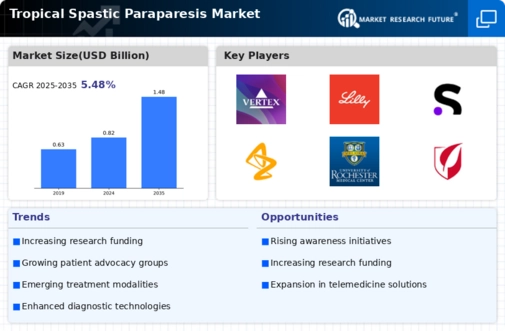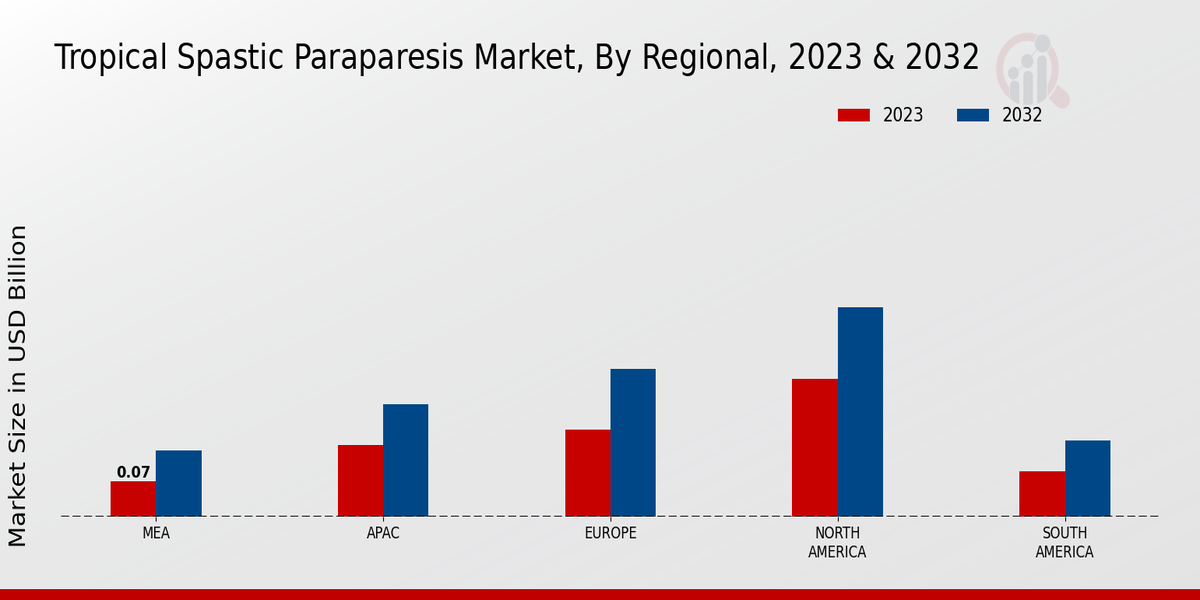The Tropical Spastic Paraparesis Market is characterized by a dynamic landscape where various pharmaceutical companies are striving to develop effective treatment options for this debilitating condition.
Tropical Spastic Paraparesis, primarily caused by viral infections, manifests as muscle stiffness and weakness, particularly in the lower limbs, impacting patients' mobility and quality of life.
The market is shaped by a range of factors, including ongoing research efforts, product innovation, clinical trials, and the emergence of novel therapies.
Competition in this sector is driven by the need for improved therapeutic solutions, with companies focusing on drug efficacy, safety profiles, and accessibility.
The presence of established players as well as emerging biotechnology firms intensifies the competition, highlighting the necessity for robust market strategies, collaborative partnerships, and a comprehensive understanding of patient needs.
Vertex Pharmaceuticals has established its presence in the Tropical Spastic Paraparesis Market with a clear focus on research and development aimed at addressing unmet medical needs.
The company is recognized for its commitment to innovative therapies that target the underlying causes of diseases, including those pertinent to spastic paraparesis.
Vertex Pharmaceuticals has built a strong portfolio of candidate drugs that leverage advanced technologies and scientific expertise.
Its strengths lie in its robust pipeline that shows promise for this condition, an emphasis on clinical validation, and a proactive approach towards engaging with the scientific community to advance knowledge on tropical diseases.
This thorough dedication enables Vertex Pharmaceuticals to position itself as a key player, with potential partnerships and alliances that can further enhance its market foothold.
Eli Lilly stands out in the Tropical Spastic Paraparesis Market with an emphasis on patient-centric solutions and a comprehensive understanding of the therapeutic landscape.
The company invests significantly in research initiatives to develop novel drug candidates targeting spastic paraparesis, showcasing its history of success in tackling complex health challenges.
Eli Lilly’s strengths are underscored by its substantial resources allocated to clinical research, the ability to navigate regulatory landscapes effectively, and a strong focus on collaboration with healthcare providers to ensure that emerging therapies are aligned with patient needs.
This strategic positioning enables Eli Lilly to leverage its experience and reputation within the pharmaceutical industry, facilitating advancements that could play a crucial role in improving outcomes for individuals affected by Tropical Spastic Paraparesis.















